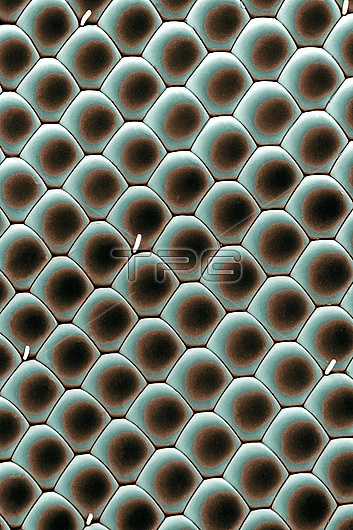
Scanning electron micrograph of the compound eye of a blowfly, Calliphora vomitoria. The picture shows a small part of the surface of the eye. The hexagonal units visible are the tips of the ommatidia. Each hexagon is a single lens, about 20 microns across, the light from which is funnelled down to photoreceptors. This picture shows the lenses of about 80 ommatidia; each eye has a total of 4500. Pigment cells lining the funnel of each ommatidium prevent light leakage to its neighbours. The bright lines visible are sensory bristles. Unlike human eyes, compound eyes have no mechanism for focussing the image. But they have properties of particular use to a fly; 360?degree vision, and, due to the large number of edges between each tiny lens, an enhanced ability to detect movement. This allows very fast reactions to threats from predators, including any human being attempting to swat them.
| px | px | dpi | = | cm | x | cm | = | MB |
Details
Creative#:
TOP26624792
Source:
達志影像
Authorization Type:
RM
Release Information:
須由TPG 完整授權
Model Release:
N/A
Property Release:
N/A
Right to Privacy:
No
Same folder images:

 Loading
Loading